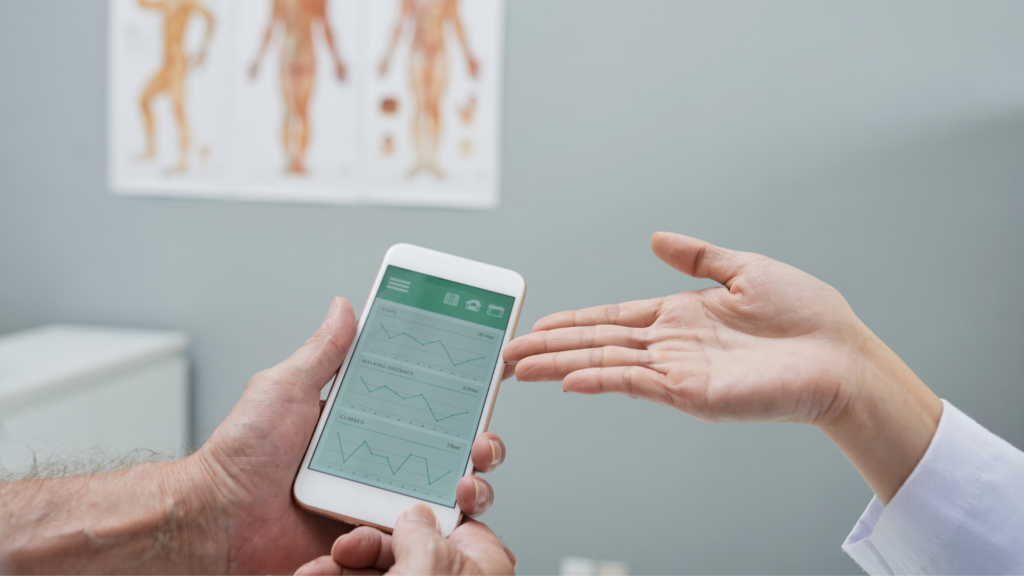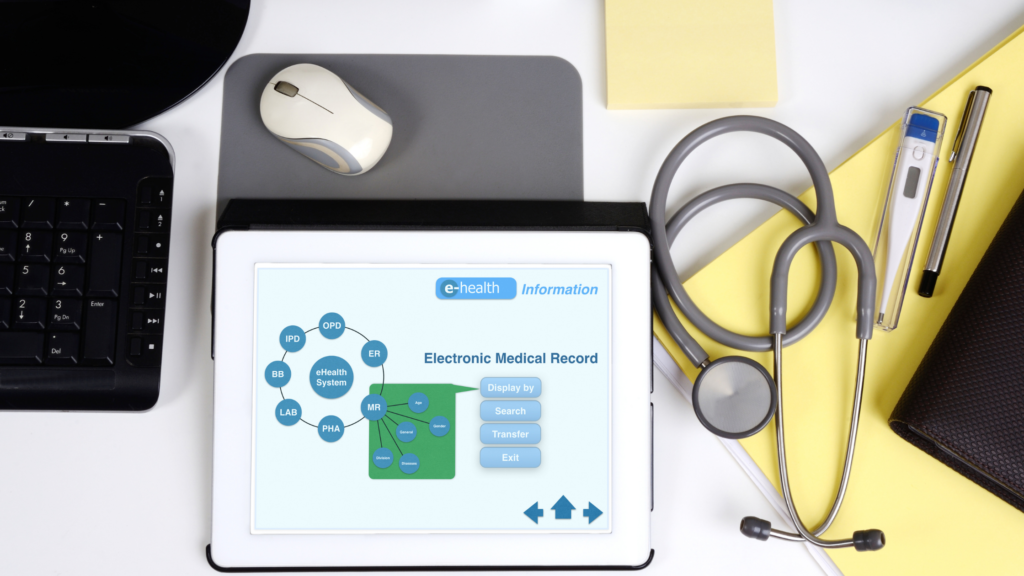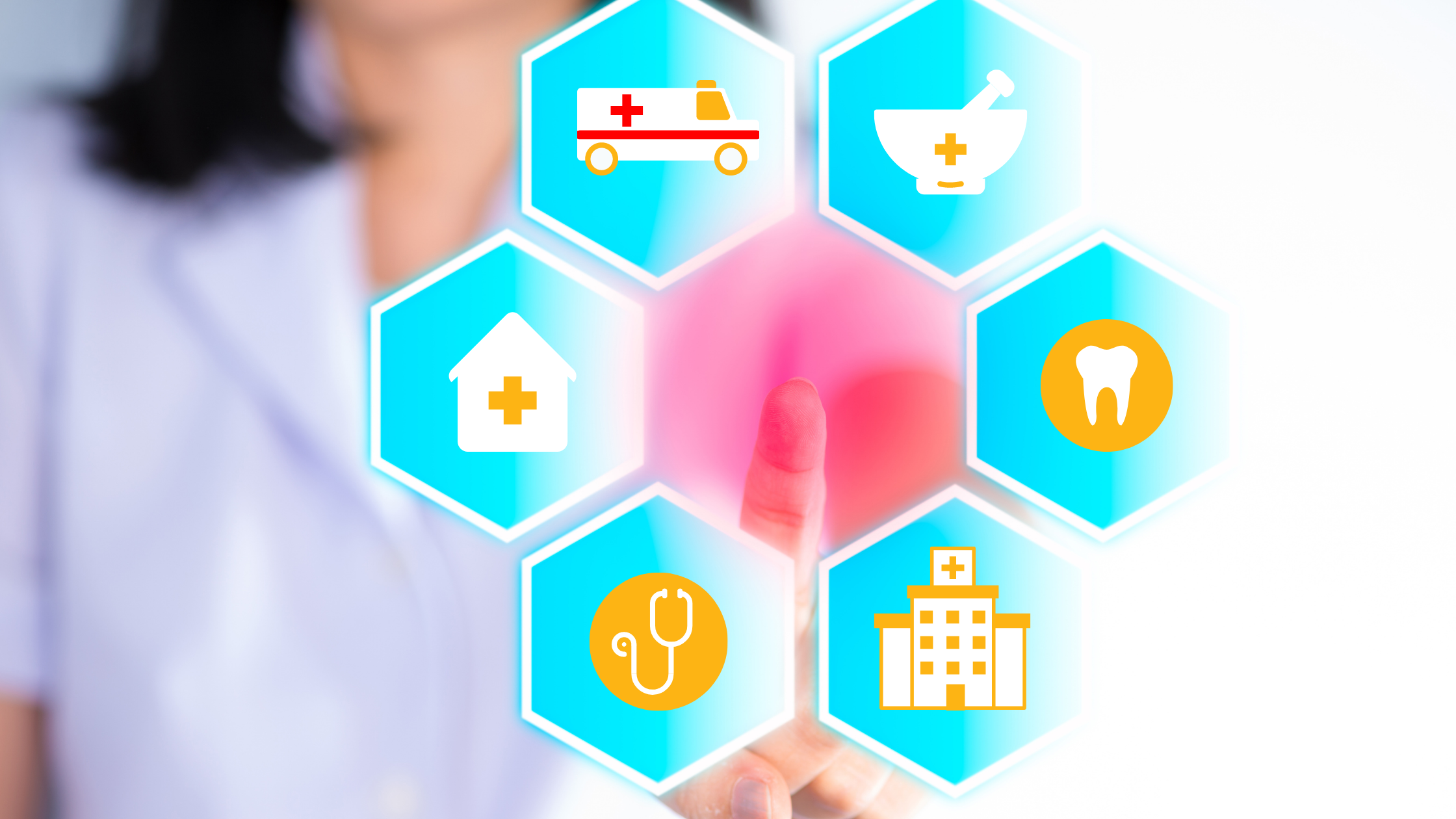With all of the technology we have nowadays, do you ever wonder why you still have to fill out so many forms at the doctor’s office? Even if your doctor is fancy enough to check you in on an iPad, you still have to list out the basics, like what you are allergic to and any surgeries you had.
Getting health systems to talk with each other would solve that problem. And the pandemic made this is the hot topic for health technology. That is where Health Information Exchanges come in.

What is a Health Information Exchange?
A health information exchange is a software platform that allows doctors, nurses, pharmacists, other healthcare workers, and patients to share medical information electronically. These exchanges share information like:
- Medications
- Tests and results
- Health problems
- Pregnancy
- Immunizations

This software also standardizes data. That means it puts information into the same format, which is needed for different systems to share it.
Health information exchanges are not new. In fact, they have been around for about 10 years. In 2010, 56 states and territories received money to set up health information exchanges. Each state or territory was responsible for connecting patient information. Since that time, many health information exchanges launched and grew.
But the challenge remains to make sure as many providers are connected as possible.

What is so great about Health Information Exchanges?
There are many benefits to health information exchanges.
Benefit #1: It can make patient records more complete.
Having more complete information can improve care. Especially for older adults who may have a number of health issues and see many different doctors, having a way for those doctors to look at the same information is important.
Think about not needing to worry if your father remembered to tell the Emergency Room doctor he is on a new blood thinner from the cardiologist.

Benefit #2: It can help people avoid the hospital (again).
Do you know what the top reasons are for seniors returning to the hospital after discharge? Here are two:
- Not following discharge instructions.
- Poor coordination of care after discharge.
A health information exchange can help with both of these issues. Exchanges can send discharge instructions to a primary care provider, and share information specialists need as well.
Some states have health information exchanges set up to alert the primary care provider when their patient gets admitted to a hospital. The provider can follow-up to make sure the patient has what they need to stay healthy and safe at home.
Benefit #3: It can prevent medication errors.
Medication errors can be deadly. Unfortunately, anyone who does not keep good records of what medications they take is at higher risk of this happening.
Health information exchanges can connect pharmacies to providers and hospitals so everyone who needs to know can see what medication a patient is taking. This can prevent prescribing medications that have bad interactions with each other.
Benefit #4: It can help people avoid double testing.
When providers cannot see your test results, they may send you for the same test you just had done. Not only is this annoying for you, but it can also mean more co-pays to the lab, and more exposure to radiation or dyes if the tests requires it.
If your provider could see other tests you had, they can use those results instead and avoid sending you for more.

Why are Health Information Exchanges a big deal right now?
The pandemic showed the benefits of health information exchanges in action:
- People went to hospitals unable to breathe, much less give their full medical history. The exchanges helped hospitals get their medical records anyway.
- At a time when you do not want anyone hanging out in a lobby to fill in paperwork, exchanges helped people get in for care faster.
- When public health departments were overwhelmed trying to report the virus, health information exchanges made reporting automatic.

Looking into the future, there is a term you will hear a lot: Interoperability.

What does ‘interoperability’ mean?
Interoperability is where different information systems can share data across companies and geographic areas. The goal is to improve health for people and entire populations. The data has to be shared securely, and people who work in this area talk about four levels of secure connections.
There are standards for interoperability, which you can think of as having a common language to share information. Examples you may hear about are HL7 (Health Level Seven) and SNOMED (Systematized Nomenclature of Medicine).
Moving forward, we will hear a lot more in health technology about interoperability and making sure systems can share health information.

Where can you find more information about Health Information Exchanges?
HealthIT.gov has a whole set of articles about health information exchanges if you really want to geek out about it. Each state also has a health information exchange program, which you can find out more about on this HealthIT.gov webpage.

Finally, there are many health information exchange software companies out there with lots of information on their websites.
AllScripts is a software company that offers a health information exchange platform called OnePartner. OnePartner operates in 9 states and contains 3 million patient records by connecting with electronic health record systems in each of those states.
They are able to do thins like identify patients who would be high risk if they contracted COVID-19, and where the pandemic hotspots are in these states. They eliminated the need for county health departments to fax information to help with local tracking.
Another health information exchange software company is Lyniate, which has a product called Corepoint.

Key Takeaways:
Health information exchanges allows healthcare workers and patients to share medical information electronically. There are many benefits to health information exchanges, but four key ones are:
- Make patient records more complete.
- Help people avoid returning to the hospital.
- Prevent medication errors.
- Help people avoid unnecessary testing.
The pandemic showed health information exchanges in action. They made sharing data easier, faster, and safer than if information had to be filled in and faxed. The next big trend around health technology will be interoperability – making sure systems can talk to each other and share information.
Finally, HealthIT.gov as well as several health information exchange vendors are great places to get started if you want to learn more.






My main takeaway from this article is that using technology could benefit patients throughout the medical field. The technology would help prevent medical errors, save hospital visits, complete records, and help stop unnecessary testing.
Thanks for commenting, Colbie! Yes, health information exchanges are definitely helpful throughout healthcare, and we are starting to see more places create regional health information exchanges they are setting up like utility companies. Expect to hear more about this in the news!